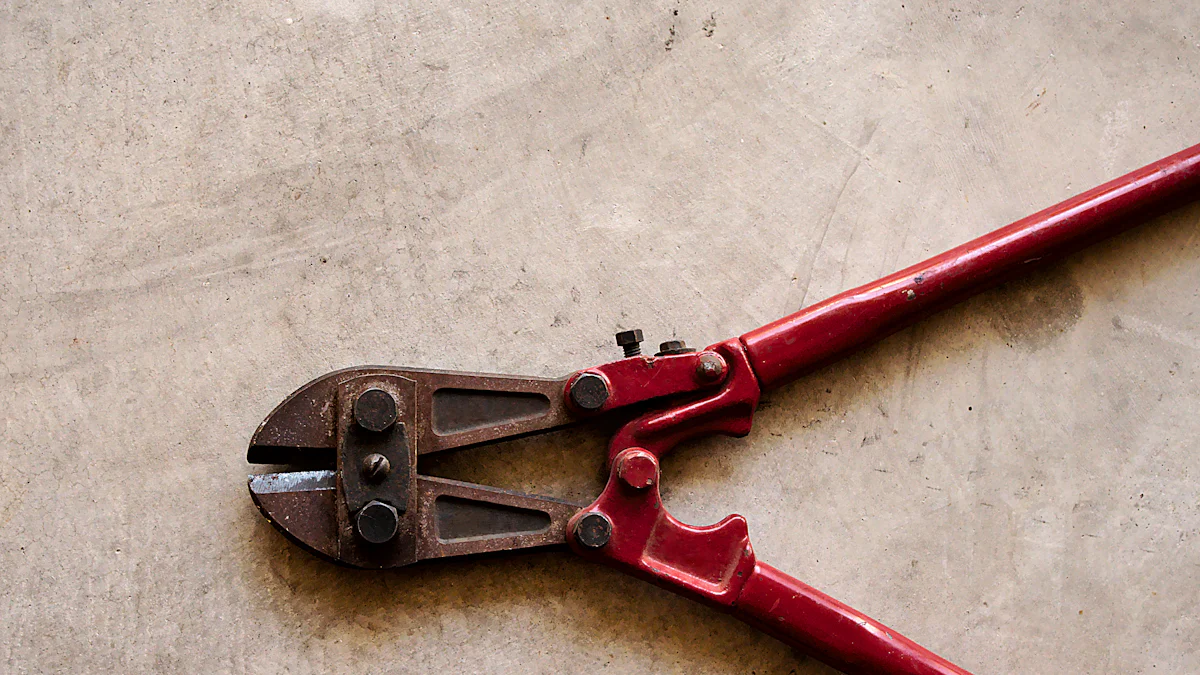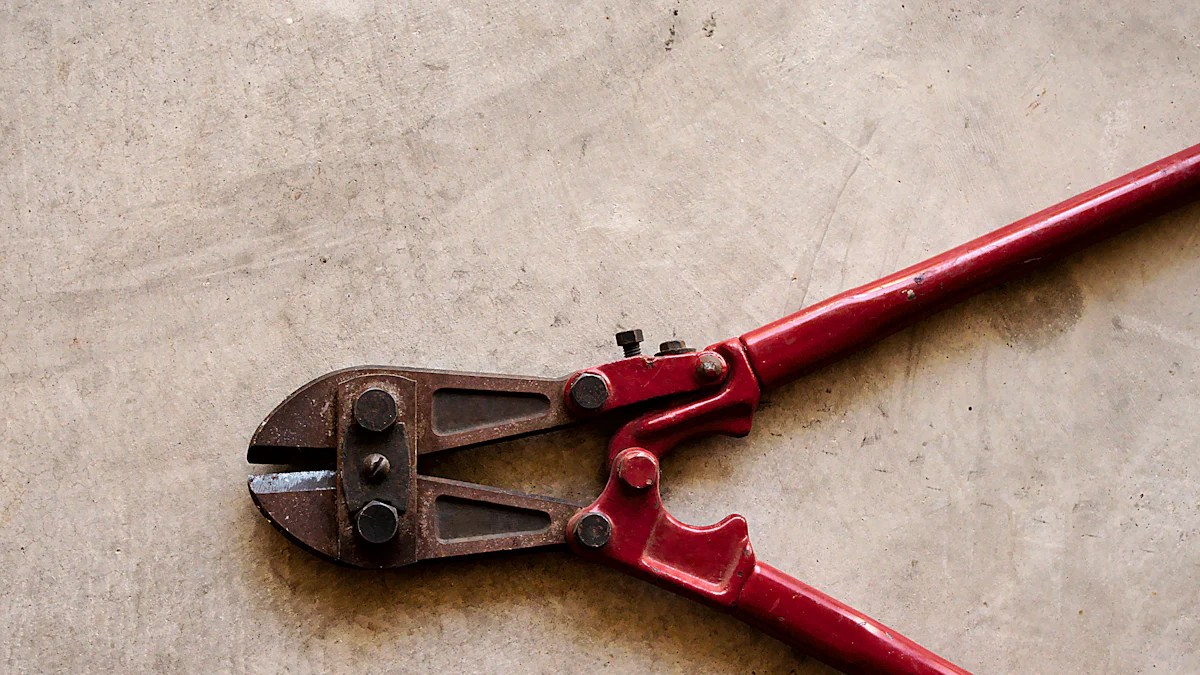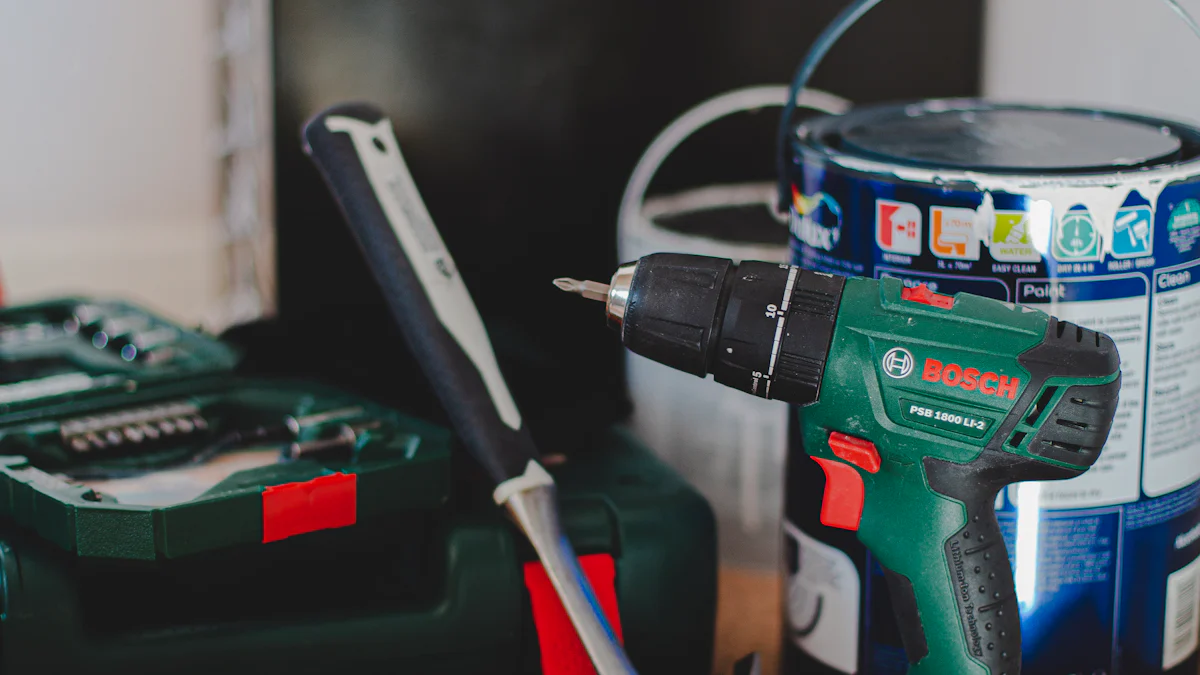
Choosing the right bolt cutting tool is crucial for efficiency and safety. Bolt cutters provide efficient cutting solutions in various applications. The construction industry sees rapid growth in the use of bolt cutters. A wide variety of bolt cutters exist, each designed for specific tasks. Using the correct tool enhances productivity and reduces the risk of injury.
Understanding Bolt Cutters

What is a Bolt Cutter?
Definition and primary use
A bolt cutter is a tool designed to cut through metal objects. The primary use of a bolt cutting tool involves severing bolts, chains, padlocks, and wire mesh. Construction workers, mechanics, and security personnel frequently use bolt cutters.
Common applications
Bolt cutters find applications in various fields. Workers use them to cut through chain link fences, rebar, and heavy-duty cables. Emergency responders rely on bolt cutters to gain access during rescue operations. Homeowners also use bolt cutters for DIY projects involving metal cutting.
Types of Bolt Cutters
Center Cut
Center cut bolt cutters feature blades that meet at the center. This design provides even pressure on both sides of the material. Center cut bolt cutters work well for general-purpose cutting tasks. These tools can handle rods, pipes, and thick cables.
Shear Cut
Shear cut bolt cutters have blades that slide past each other. This action resembles scissors cutting paper. Shear cut bolt cutters excel at cutting soft metals and thin materials. These tools offer precision and clean cuts.
Clipper Cut
Clipper cut bolt cutters possess blades that are flush with one side. This design allows for cutting close to surfaces. Clipper cut bolt cutters are ideal for removing bolts and rivets. These tools provide access to tight spaces.
Angle Cut
Angle cut bolt cutters feature blades that meet at an angle. This design creates a wedging action. Angle cut bolt cutters are suitable for cutting hard materials. These tools offer increased leverage and cutting power.
Key Components of Bolt Cutters
Blades
The blades of a bolt cutting tool determine its cutting ability. High-quality blades consist of hardened steel. The edge hardness should not fall below HRC53. Replaceable blades extend the lifespan of the tool.
Handles
The handles of a bolt cutting tool provide leverage. Longer handles make cutting easier. Shorter handles offer better portability. Ergonomic grips reduce hand fatigue during use.
Jaws
The jaws of a bolt cutting tool hold the material in place. Adjustable jaws accommodate different material sizes. Proper jaw alignment ensures efficient cutting.
Joints
The joints of a bolt cutting tool connect the handles and blades. Strong joints withstand high pressure during cutting. Regular maintenance prevents joint wear and tear.
Factors to Consider When Choosing a Bolt Cutting Tool
Material to be Cut
Hardness of the material
Consider the hardness of the material before selecting a bolt cutting tool. Hard materials require tools with high edge hardness. For example, a 24″ high leverage compound bolt cutter can cut up to 8mm at 48HRC. Softer materials do not need such high specifications. Always match the tool’s capacity with the material’s hardness.
Thickness of the material
The thickness of the material also influences the choice of a bolt cutting tool. Thicker materials need stronger tools. A bolt cutter with a maximum diameter capacity of 11mm works well for thicker materials. Ensure the tool can handle the material’s thickness to avoid damage and ensure efficiency.
Size and Length of the Bolt Cutting Tool
Handle length
Handle length affects both leverage and portability. Longer handles provide more leverage, making cutting easier. However, longer handles reduce portability. Shorter handles offer better portability but require more effort. Choose a handle length that balances ease of use and portability based on your needs.
Blade size
Blade size determines the cutting capacity of a bolt cutting tool. Larger blades can cut through thicker and harder materials. Smaller blades are suitable for lighter tasks. Always select a blade size that matches the material and task requirements. This ensures efficient and safe cutting.
Cutting Capacity
Maximum diameter
The maximum diameter a bolt cutting tool can handle is crucial. Different tools have varying capacities. For instance, a 14” bolt cutter has a max jaw opening of 19/32 in (15mm). Always check the tool’s maximum diameter capacity. This ensures it can handle the materials you need to cut.
Material compatibility
Material compatibility is another important factor. Some bolt cutters are designed for specific materials. For example, certain tools excel at cutting soft metals, while others handle hard metals. Ensure the bolt cutting tool you choose is compatible with the materials you will be cutting. This guarantees optimal performance and longevity.
Handle Comfort and Ergonomics
Grip Design
Selecting a bolt cutting tool with a well-designed grip enhances comfort and efficiency. A good grip design reduces hand fatigue during extended use. Look for grips that fit comfortably in your hand. Non-slip materials provide better control and safety. Ergonomic grips distribute pressure evenly across your hand. This design minimizes strain and prevents blisters.
Handle Material
The material of the handles impacts both durability and comfort. High-quality bolt cutting tools often feature handles made from steel or aluminum. Steel handles offer strength and longevity. Aluminum handles provide a lighter option without sacrificing durability. Some bolt cutting tools include cushioned handles. These cushions absorb shock and reduce vibration. Rubberized handles enhance grip and comfort, especially in wet conditions. Always choose a handle material that suits your specific needs and preferences.
Additional Features and Accessories

Adjustable Jaws
Benefits of adjustable jaws
Adjustable jaws offer flexibility. These jaws can handle different material sizes. This feature makes a bolt cutting tool versatile. Adjustable jaws improve cutting efficiency. Users can switch between tasks without changing tools.
How to adjust
Adjusting the jaws is simple. First, locate the adjustment screw. Turn the screw to widen or narrow the jaw opening. Ensure the jaws align properly. Proper alignment ensures clean cuts. Always follow the manufacturer’s instructions for adjustments.
Replaceable Blades
Advantages of replaceable blades
Replaceable blades extend the lifespan of a bolt cutting tool. Users can swap out worn blades. This feature saves money on new tools. High-quality replacement blades maintain cutting performance. Replaceable blades ensure consistent results.
Replacement process
Replacing blades requires basic tools. First, remove the screws holding the old blades. Carefully detach the worn blades. Align the new blades with the bolt cutting tool. Secure the new blades with screws. Test the tool to ensure proper blade alignment.
Safety Features
Locking mechanisms
Locking mechanisms enhance safety. These features prevent accidental openings. Users can lock the bolt cutting tool when not in use. Locking mechanisms reduce the risk of injury. Always engage the lock after each use.
Safety guards
Safety guards protect users from injuries. Guards cover sharp edges and moving parts. These features prevent accidental cuts. Safety guards also protect the bolt cutting tool from damage. Regularly inspect guards for wear and tear.
Recommendations and Usage Tips
Top Brands and Models
Overview of leading brands
Several brands stand out in the market for bolt cutting tools. Crescent offers high-leverage compound bolt cutters known for their superior cutting performance. MCC provides tools with symmetrically aligned blades, which prolong blade lifespan and reduce physical stress on users. Knipex is another reputable brand, offering durable and efficient bolt cutters.
Popular models and their features
- Crescent High-Leverage Compound Bolt Cutters
- Features: Integrated stabilizer on handles, all-purpose jaws with center-cut blades.
- Benefits: Increased leverage and control, lower force required for cutting.
- MCC Bolt Cutters
- Features: Symmetrically aligned blades, side adjustment to absorb cutting shock.
- Benefits: Prolonged blade lifespan, reduced physical stress on users.
- Knipex CoBolt Compact Bolt Cutters
- Features: Precision cutting edges, ergonomic handles.
- Benefits: Clean cuts with less effort, comfortable grip for extended use.
Maintenance Tips
Cleaning and lubrication
Regular maintenance ensures the longevity of your bolt cutting tool. Clean the tool after each use to remove debris and metal shavings. Use a wire brush to clean the blades and joints. Lubricate the moving parts with machine oil to prevent rust and ensure smooth operation. Regular lubrication reduces friction and wear on the tool.
Storage advice
Proper storage extends the life of your bolt cutting tool. Store the tool in a dry place to prevent rust. Use the built-in handle lock to keep the tool closed when not in use. This feature prevents accidental damage and ensures safety. Consider using a tool bag or case for added protection during storage and transport.
Safety Tips
Proper usage techniques
Using a bolt cutting tool correctly enhances safety and efficiency. Position the material securely within the jaws before cutting. Apply steady pressure on the handles to make a clean cut. Avoid twisting or jerking motions, as these can damage the tool and cause injury. Always use the tool within its specified capacity to prevent breakage.
Personal protective equipment (PPE)
Wearing appropriate PPE protects you during cutting tasks. Use safety glasses to shield your eyes from flying debris. Wear gloves to protect your hands from sharp edges and provide a better grip. Consider using ear protection if working in a noisy environment. Proper PPE reduces the risk of injury and ensures a safer working experience.
Selecting the right bolt cutter is crucial for achieving efficiency and safety in your tasks. Consider all factors, including material hardness, thickness, handle length, blade size, and cutting capacity. Remember that using the correct tool enhances productivity and reduces the risk of injury. For example, a customer found that a TEKTON 8-Inch Bolt Cutter performed exceptionally well for their specific needs, making 3,840 cuts with consistent performance. The right bolt cutter will make your work easier and safer. Prioritize quality and suitability to ensure the best results.
See Also
Scooter Upgrades: High-Quality Parts for Maximum Performance
Discovering Diverse Sock Options for Both Genders
Mastering Winter Comfort with Soft and Cozy Sock Essentials
